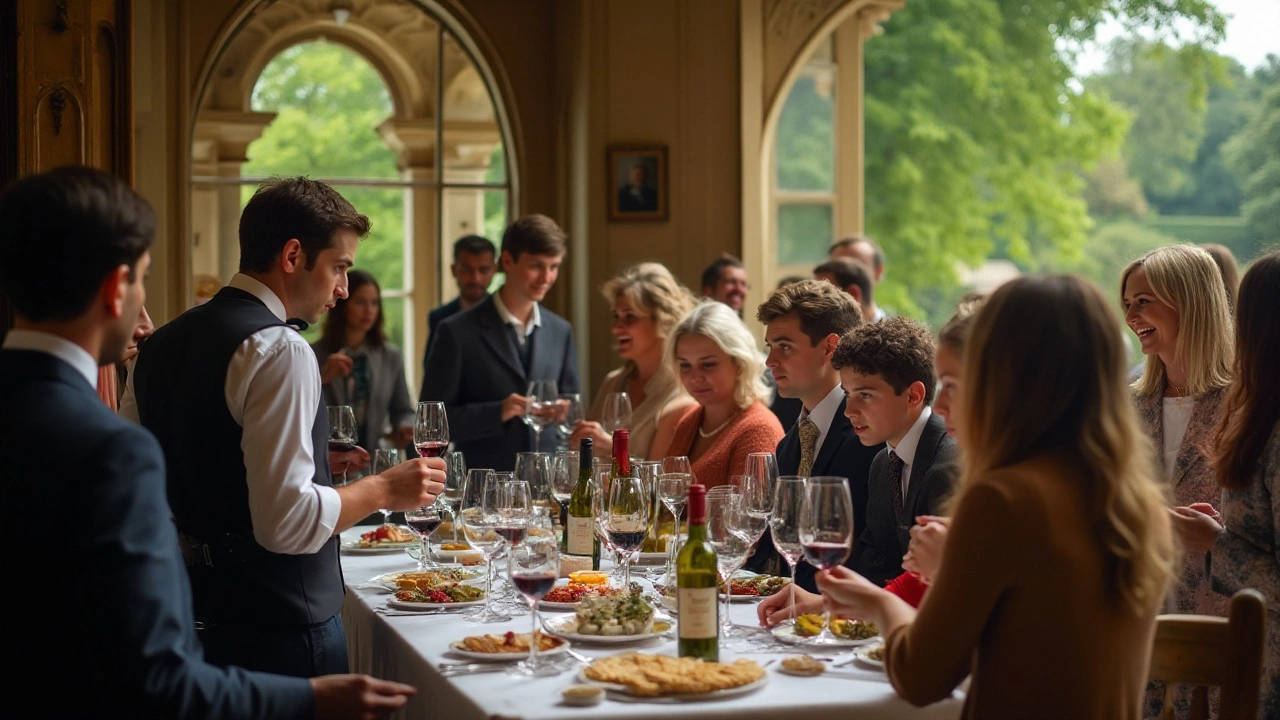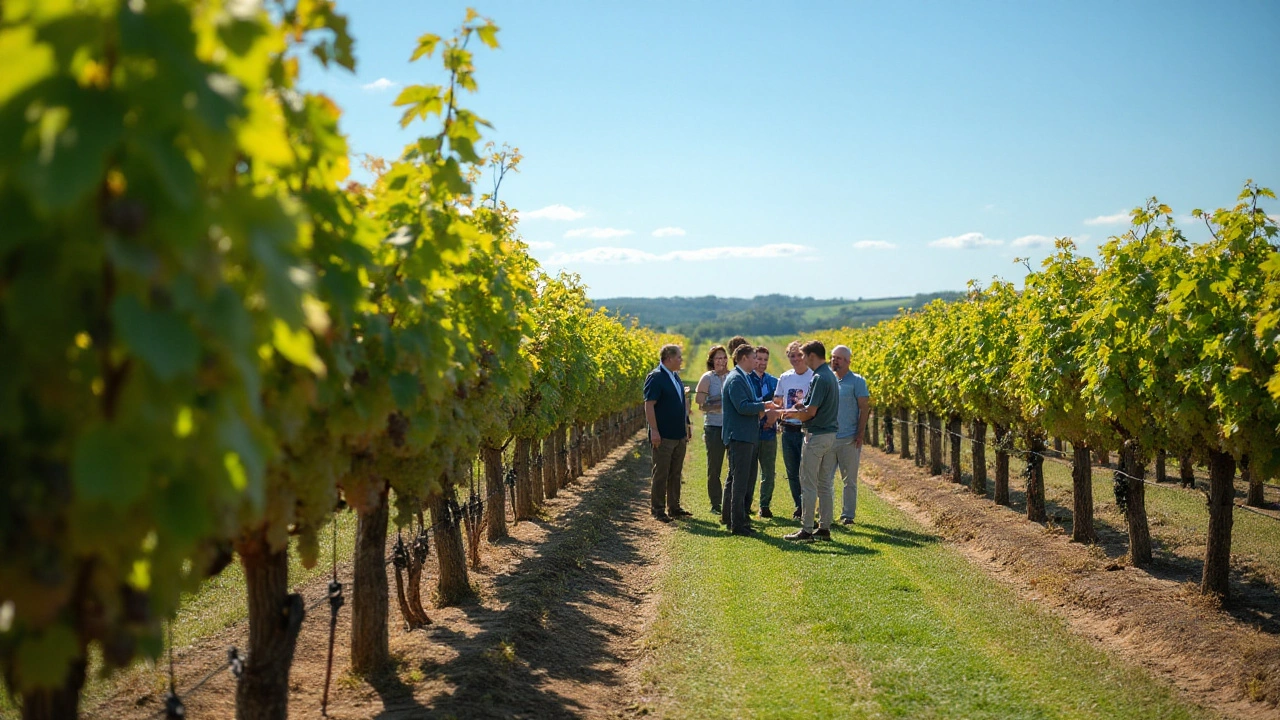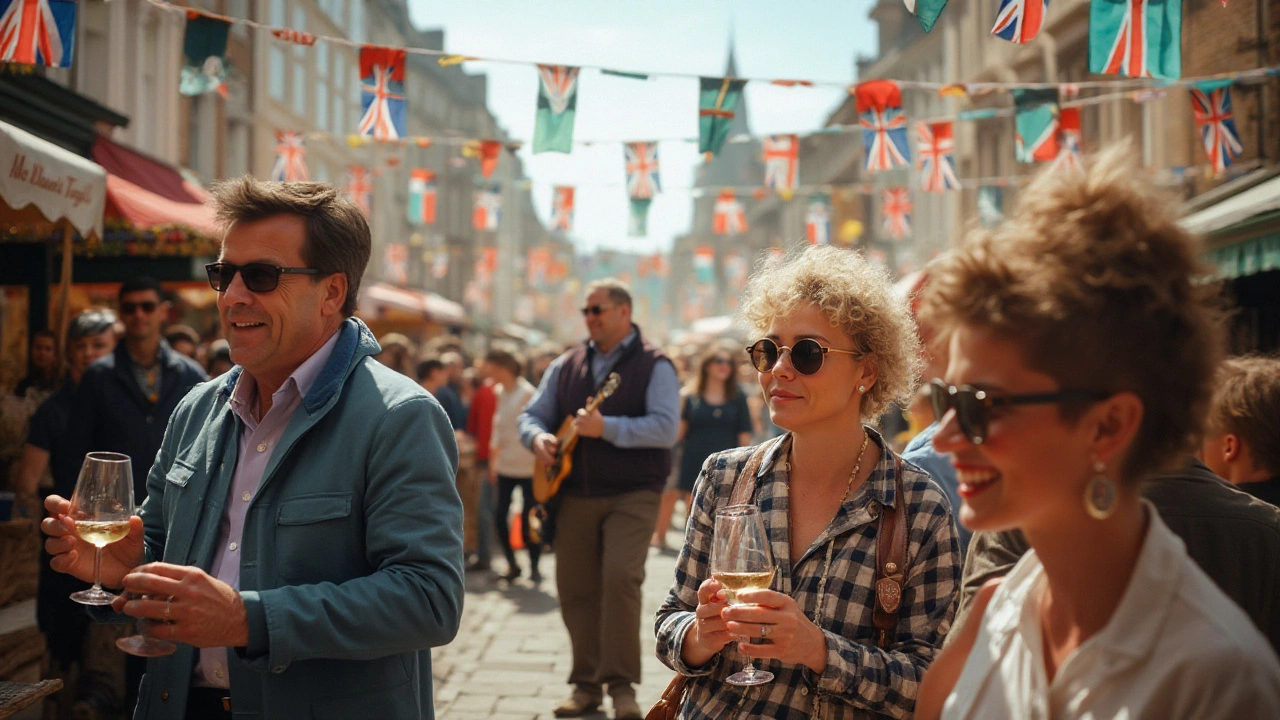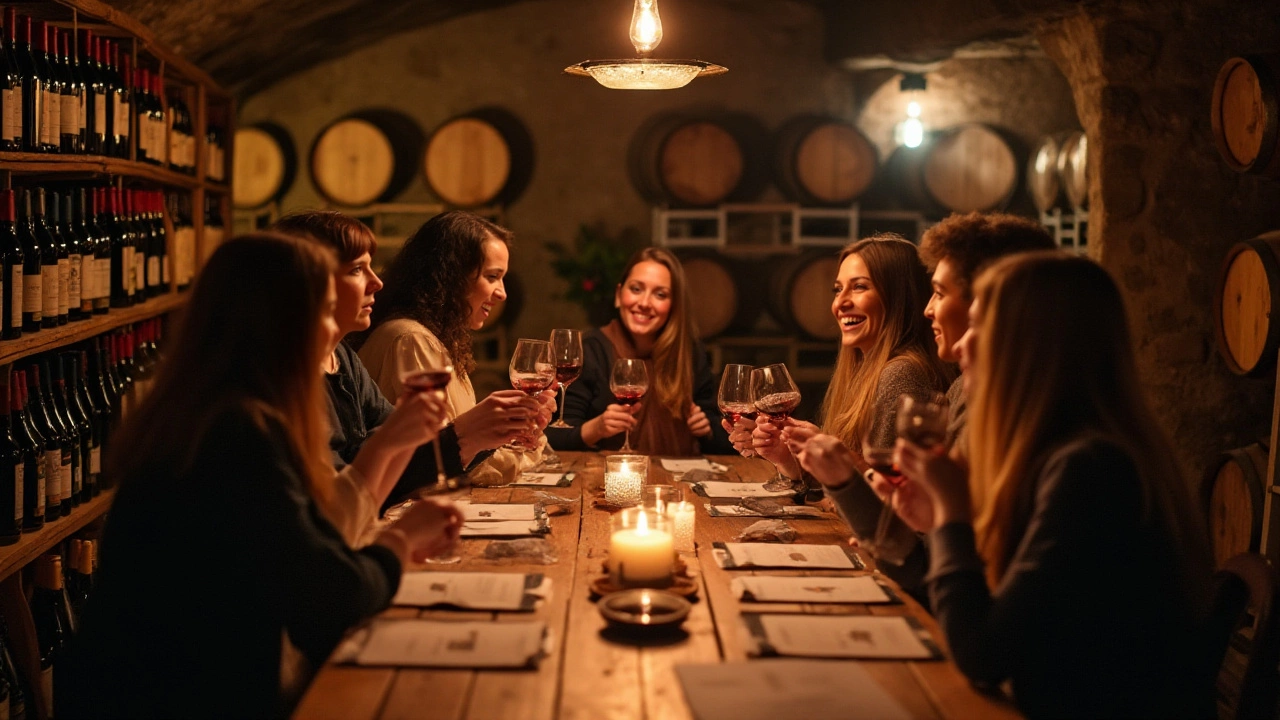Wine tasting, an age-old tradition, is much more than just the act of drinking wine. It’s a carefully curated experience designed to engage all your senses. At its core, wine tasting is about exploration and discovery, where each glass is a story waiting to unfold.
Walking into a wine tasting event feels like stepping into a world where wine is revered and celebrated. The setting is usually elegant, with rows of glasses neatly lined up, each containing a world of flavors waiting to be unveiled. As you take your place, the ambiance sets the tone for what promises to be a sensory delight.
Each step of the tasting process invites you to slow down and savor. From observing the rich hues of the wine against the light to swirling it in the glass to release its aromas, you are invited into a dance of senses. The culmination of each sip is more than taste – it's a full-bodied experience, as you detect hints of fruit, earth, and spice.
Wine tastings can also be educational, often guided by experts who are eager to share the story behind each bottle. As you listen to tales of terroirs, grape varieties, and winemaking artistry, you gain a deeper appreciation for the passion and precision that goes into each pour. Whether for leisure or learning, wine tasting remains a uniquely satisfying pursuit.
- The Environment and Setting
- The Senses at Play
- The Art of Tasting and Spitting
- Engaging with Wine Experts
The Environment and Setting
Walking into a wine tasting event often feels akin to entering a realm dedicated to sophistication and sensory indulgence. These gatherings are thoughtfully orchestrated to enhance both the educational and enjoyable aspects of the wine experience. The venue itself plays a crucial role in setting the mood, often being held in picturesque vineyards, elegant tasting rooms, or contemporary urban wine bars. Each location comes with its unique charm, contributing to the atmosphere that envelops the surrounding space.
The arrangement within the venue usually includes crisp white tablecloths that make the varying shades of wine more vivid and visually appealing. Aromas of oak, fruit, and spice mingle in the air, crafting an inviting bouquet that hints at the complex characters you’re about to experience. Each wine event is as much about community as it is about the wine itself, bringing together people who share a passion for this timeless beverage. This communal aspect invites conversation and shared experiences, forming connections over each sniff, swirl, and sip.
The setting can often be accompanied by soft, ambient music that provides a soothing backdrop to the clinking of glasses and the murmur of conversation. Lighting is deliberately dimmed to create a cozy, intimate feel, yet bright enough to allow wine lovers to appreciate the wine's appearance in their glasses. In this atmosphere, even the most vibrant of wines seem to possess an inner glow, enhancing their allure and drawing tasters into a deeper appreciation of the artistry on display.
Moreover, some wine tastings might include decor or displays that tell stories of the regions from which the wines originate. Maps dotted with vineyards might hang on walls, or perhaps photographs of grape harvests and winemaking in action, providing a tangible connection to the origin of the wines being sampled. Such elements help immerse participants in the vast world that lies behind each label, reinforcing the idea that wine is more than just a drink; it is a journey through varied terrains and climates.
“Wine is sunlight, held together by water,” as one famous quote often attributed to Galileo suggests.
In essence, these environments serve to hold that 'sunlight' in a context that amplifies its warmth and vibrancy, urging guests to relax and open their senses to the stories encased within each bottle.

The Senses at Play
Wine tasting is truly an art form that engages the full spectrum of senses, inviting you into an immersive and multisensory experience. One of the first things a seasoned taster will mention is the importance of sight. The color of a wine can tell you a surprising amount about its age, grape variety, and even region of origin. Red wines may vary from a deep garnet to a lighter ruby, while whites can range from pale straw to a golden hue. By swirling the wine in your glass, you can also observe its "legs" or "tears," the streaks that form on the glass, which can hint at the level of alcohol or sugar content in the wine.
The art of wine tasting heavily involves the sense of smell, often considered just as crucial as taste, if not more so. The aroma of a wine, also known as its "bouquet," can transport you to different realms. Swirling the wine in the glass releases volatile compounds, enabling an array of scents to rise and captivate your senses. You might catch earthy notes of a French burgundy or the citrusy aroma of a young Sauvignon Blanc. It is said that humans can detect thousands of different smells, and each whiff of your glass could reveal something new about the wine.
"Wine makes every meal an occasion, every table more elegant, every day more civilized," noted wine critic Andre Simon, highlighting the elevated experience wine brings through taste and aroma.
Taste is undoubtedly the sense most associated with wine, but it's important to understand the complexity it involves. As you take a sip, your taste buds will register a range of sensations, from sweet and sour to bitter and salty. However, it doesn't end there. You will also perceive umami, a savory taste found in aged wines. As the wine rolls over your tongue, consider its texture: is it silky, rough, or somewhere in-between? The body of the wine, whether light or full, will also contribute to the intricacies of flavor. Remember, each wine carries a balance of acidity, tannins, and residual sugar, which plays into its overall harmony.
There's also the underappreciated sense of hearing, often overlooked in the wine tasting process. While not directly related to the tasting itself, the ambiance and conversations around wine contribute to the experience. The clinking of glasses, the gentle hum of conversation among friends, and the crack of a new bottle being opened, all enrich the wine tasting affair. This atmosphere sets the stage for a shared understanding and appreciation of the wines on offer, reinforcing the social elements of wine culture.
Then comes the tactile sense, encompassing the physical sensations a wine imparts, including texture and body. Does the wine feel crisp and refreshing, or rich and velvety? These tactile qualities can dramatically alter your perception and enjoyment of a wine. In fact, any seasoned sommelier will tell you that the texture of a wine can often be its most mysterious and captivating element, requiring more than just a functional taste test to decipher. These qualities, brought together, make for a cohesive and compelling narrative hidden within each glass.

The Art of Tasting and Spitting
The heart of any wine tasting event is the meticulous process of tasting and spitting, a practice deeply rooted in tradition and necessity. It's here that the serious exploration of wine begins, focusing on appreciating the myriad flavors without the intoxication. As you approach this art, it’s essential to start by observing the wine. Take note of its color and clarity, which can offer the first visual cues about the wine's age and character. Young wines might exhibit brilliant hues, while older wines tend to have more subdued tones. Swirl the glass gently to unlock a cascade of aromas, releasing the wine’s bouquet into the air, an act often considered the gateway to its soul.
Your nose plays a pivotal role in the tasting process. With wine, aroma is everything, and taking a moment to inhale deeply can reveal layers of scents, ranging from floral to fruit to spice. This moment of smelling isn’t just a prelude to tasting; it's integral to understanding the complexity of what's in your glass. Once you’ve engaged your nose, it's time to take a sip, letting the wine bathe your palate. Hold the wine in your mouth for a few seconds, allowing it to reach every part of your tongue, thus identifying its nuances. You might catch flavors you hadn't expected, like a hint of smoky earthiness in a red, or a crisp, green apple note in a white.
“It's not about who can discern the most flavors, but about who can unravel the story within the glass,” said renowned sommelier Jancis Robinson.
Finally, the spitting. This crucial step is all about moderation. By spitting, you can taste numerous wines in one sitting without negating your sensory perception. Many tastings provide a spittoon – don’t be shy to use it. Mastering the spit ensures you leave the event with your faculties intact and your senses attuned. Some might shy away from spitting, but seasoned tasters know it's both an art and a necessity. Spitting ensures each wine is judged objectively, without interference from the effects of alcohol clouding judgment. Thus, a thorough wine education hinges on the ability to compartmentalize enjoyment from intoxication.
This practice isn't just practical but respected among wine aficionados. Each sip and every spit represents a deeper dive into the ocean of tastes and aromas encompassing each vintage. With each wine swirled and savored, tasters engage in a dialogue with the glass, slowly uncovering what each bottle has to offer, one refined sip at a time.

Engaging with Wine Experts
In the realm of wine tasting, one finds that the experience often comes alive through the stories and insights shared by wine experts. These individuals, who have spent years immersed in the world of wine, offer a wealth of knowledge that can enhance any tasting event. As a participant, engaging with these experts can turn a simple sip into a deeper understanding of the winemaking process and the cultural significance of different wine events.
Experts are typically vintners, sommeliers, or seasoned enthusiasts with an impressive ability to articulate the subtle nuances of each wine. Their passion is contagious, and as you converse with them, you may find yourself discovering intricacies you hadn’t noticed before. They can guide you in identifying the provenance of a wine’s flavor profile, explaining how a vineyard’s climate, soil, and grape variety interact to create unique tastes. Such insights can make each tasting not just about indulgence, but education too.
Communicating with a sommelier, for instance, provides a deeper dive into the art of pairing food and wine. These experts often share which wines complement specific dishes, enhancing flavors and elevating a meal experience. This practical knowledge transforms a regular dinner party into an epicurean adventure. An old saying by André Simon, a respected wine author, encapsulates the essence of these interactions:
"Wine makes every meal an occasion, every table more elegant, every day more civilized."Their guidance is based on both tradition and innovation, leading to delightful surprises on your palate.
Don’t hesitate to ask questions during these events. Experts are usually eager to explain the subtleties between New World and Old World wines or the effects of aging and fermentation. They might even offer behind-the-scenes insights into the challenges faced by winemakers today, such as shifts in climate or trends in sustainable practices. Additionally, many experts enjoy debunking common myths associated with wine, which can lead to a humorous and enlightening conversation. This dialogue not only enriches the tasting but also nurtures a lasting interest in the culture of wine.
A chance to engage with wine experts is also an opportunity to participate in a sensory journey, where the expert helps you refine your palate. This experience often includes guided meditations on aroma and taste, helping participants to identify specific notes like berry, oak, or even chocolate within a glass. This focus on a sensory experience turns wine tasting into a mindful activity, encouraging you to be present and attentive to each delicate sip. Such guidance can exponentially enhance your future wine experiences, transforming you from a casual drinker into a discerning aficionado.


